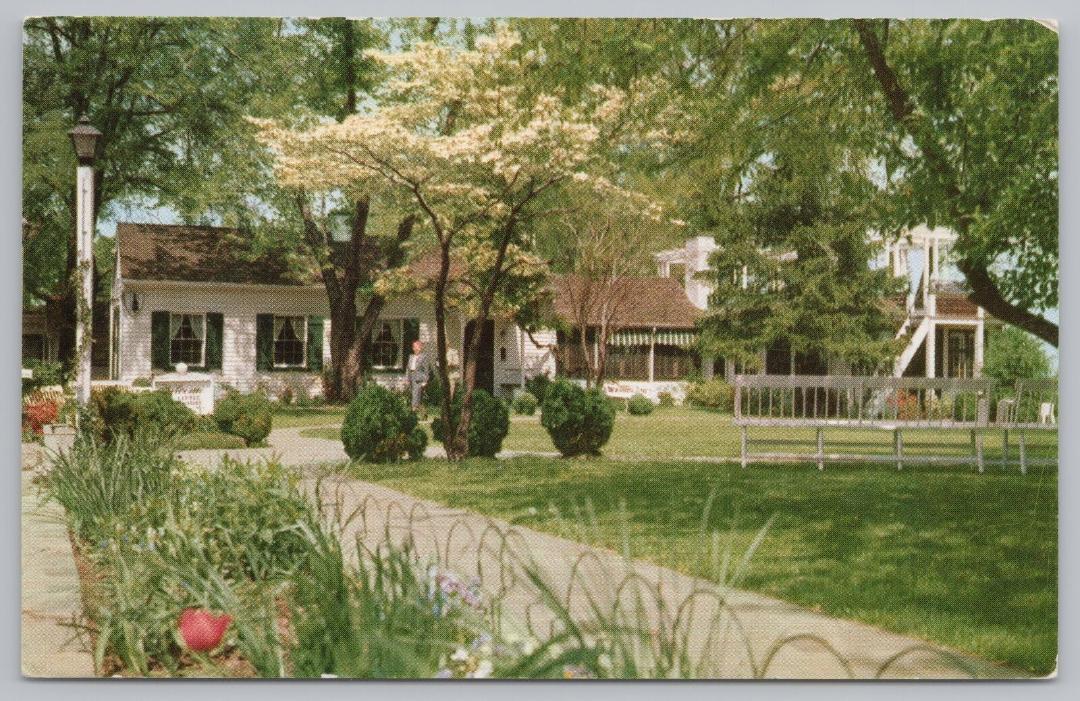Little Tea House
During its heyday, many famous people ate at the restaurant

A restaurant, frequented by Eleanor Roosevelt, Amelia Earhart, and Oliver Wendell Holmes. was one of the first places in Arlington where racially mixed groups could meet.
The Little Tea House Restaurant, located on Arlington Ridge Road, opened in 1920 and remained there until 1963 when it was demolished to make room for a high-rise apartment building.
During its heyday, many famous people ate at the restaurant, including Eleanor Roosevelt, Amelia Earhart, and Oliver Wendell Holmes. Known for its lovely gardens and views, it was also one of the first places in Arlington where racially mixed groups could meet.
Gertrude Crocker, who started the restaurant, was active in women’s issues throughout her life and started the restaurant so she could be independent and her own “boss.” When Mrs. Crocker leased, and later sold, the business to Gertrude Allison, it became known for a period as Allison’s Little Tea House.
In a letter smuggled out of the Washington District Jail in November 1917, Gertrude Crocker tells her mother that she reminds herself of “a rat in a trap,” caught there “merely for holding a banner in front of the White House.” Crocker wrote this letter while serving her first of three sentences during the suffrage campaign of the National Woman’s Party (NWP).
Gertrude Lynde Crocker was born in Milwaukee, Wisconsin on January 7, 1884 and grew up in Hinsdale, Illinois where her father worked for the railroad. By late 1914, Crocker had joined the Congressional Union for Woman’s Suffrage (CU) (which became the NWP in March of 1917) and was working at CU headquarters in Washington, D.C. where she helped organize the deputation that visited President Wilson on January 6, 1915.
In 1915, Crocker worked as an organizer in her home state of Illinois sending reports to Lucy Burns in Washington, D.C. to be published in the CU’s newspaper, The Suffragist, and hosting Alice Paul at her home in Hinsdale when Paul visited the state in August 1915.
On January 10, 1917, the CU began practicing “militant” tactics and Crocker was among the 12 women who participated in the first ever picket protest outside the White House. The “Silent Sentinels,” as they were called, continued the picket campaign for over two years until they had won women the right to vote in every state in the U.S.
Fighting for their political beliefs, the suffragists—including Crocker and her sister, Ruth—endured harassment and attacks by angry mobs during their silent picketing.
They were illegally arrested, tried, and convicted on charges of “obstructing traffic” and “burning effigies,” and were the first U.S. citizens to claim they were being held as political prisoners, an issue they highlighted by participating in days-long hunger strikes that occasionally resulted in force-feeding while imprisoned.
In addition to running her own business, Crocker was active in local civic organizations such as the Soroptimist International of Arlington, of which she was a charter member and President from 1946-1947; Arlingtonians for a Better County (ABC); the League of Women Voters; and the Arlington Civic Federation, of which she served as President of the Library Committee in 1954.
Images



